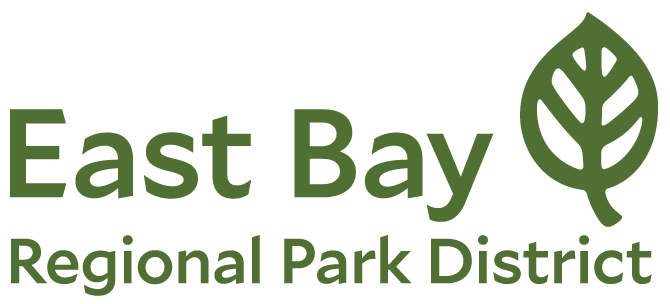Plant Pathogen Prevention in our Parks

Phytophthora infestans on potato roots
East Bay Regional Park District is experiencing a new plant disease epidemic. This plant disease was first detected in 2012 in a native plant nursery and then in 2014/2015 in a restoration site in the Bay Area. After initial detection, over 50 different plant pathogens were identified in plant nurseries and restoration sites. Nurseries have been determined to be the cause of the new diseases in our parklands and restoration sites. The source of these plant diseases is a fungus-like organism that lives on plant roots called Phytophthora, which means “Plant Destroyer.” It is transmitted by contaminated nursery stock, the introduction of contaminated soil, vegetation, dirty equipment, and water. It is important to be aware of and take measures to protect natural areas from these virulent pathogens.
What is Phytophthora?
[FAQ Page https://www.suddenoakdeath.org/]
The genus Phytophthora (pronounced Fie-TOF-ther-uh) is a group of microscopic organisms that includes some of the most devastating pathogens of plants. Phytophthora is part of a larger group of organisms known as oomycetes (egg-fungi) which typically resemble other fungi such as molds and mushrooms but actually belong to a different group more closely related to brown algae and diatoms. Although water and moist conditions are important for their life cycles, most of the more than 150 described Phytophthora species are land-dwelling plant pathogens. Commonly called “water molds”, Phytophthora species produce swimming spores, called zoospores, and thrive under wet environmental conditions.
Notorious Phytophthoras include P. infestans that causes potato late blight and led to the Irish potato famine of the 1840s, P. cinnamomi, which infects more than 2,000 plant species and is particularly damaging in Australian wildlands, and P. ramorum, cause of sudden oak death (SOD). Phytophthora species are among the most destructive pathogens of agricultural crops and forests in the world. However, not all Phytophthora species are created equal; they have different host ranges, and most cause less severe or less widespread damage. The concern regarding Phytophthora species in nurseries and forests is also not new, but until recently, we did not realize the extent of infestation in California native plant nurseries, and as a result, in landscaping and restoration sites.
Differences Between Sudden Oak Death (SOD) and Nursery Phytophthoras
The main difference between SOD and nursery Phytophthoras, such as P. cinnamomi, is that SOD is transmitted through air as well as contaminated water or soil. The Phytophthoras that are transmitted through nursery plants require moist soil, plant material, or dirty equipment to infest a new location. Therefore, it is well worth the time and effort to adopt some basic strategies, or park hygiene, to keep these pests out of our wildland areas. Once a pathogenic Phytophthora infests an area, it is difficult if not impossible to remove it.
Background Presence of SOD in EBRPD
SOD is present throughout EBRPD lands, in areas which support coast live oak (Quercus agrifolia) and California bay (Umbellularia californica). Maps of the known extent of SOD are available HERE.
Consult this map to see where in your park the Phytophthora that causes SOD has been confirmed. If SOD has been confirmed in your park, assume that all areas in your park may harbor the pathogen regardless of symptomatic species. Follow all SOD BMP recommendations by your park and the State of California.
Best Management Practices, or Park Hygiene!
Practice these simple actions to prevent new introductions and slow the spread of existing infestations:
1. Arrive and Leave Clean: When you arrive to and leave the parks, make sure your boots, hiking poles and bicycle tires are clean of dirt, mud, and vegetation. The risk of spreading pathogens or weeds increases with the amount of mud, soil and organic debris that adheres to you, shoes, your tools, vehicles, pets, etc.
2. Stay on Trails: Wherever possible, stay on paved, rocked and well-traveled trails. Avoid cross-country travel.
3. Avoid wet weather:. When there is enough water on the trail that you end up getting muddy, then its best to reschedule! Mud full of weed seeds and potentially plant pathogens can travel a very long distance on your boots and bikes!
4. DO NOT PLANT any plants in your parks! Plant nurseries are full of plant pathogens! Work with your local park supervisor or stewardship department if you would like to help with restoration and habitat enhancement projects!
5. Watch and share this educational VIDEO that explains how we all can keep our parks healthy and thriving!
Arrive Clean, Leave Clean, Make Park Hygiene a Cultural Routine!!!
